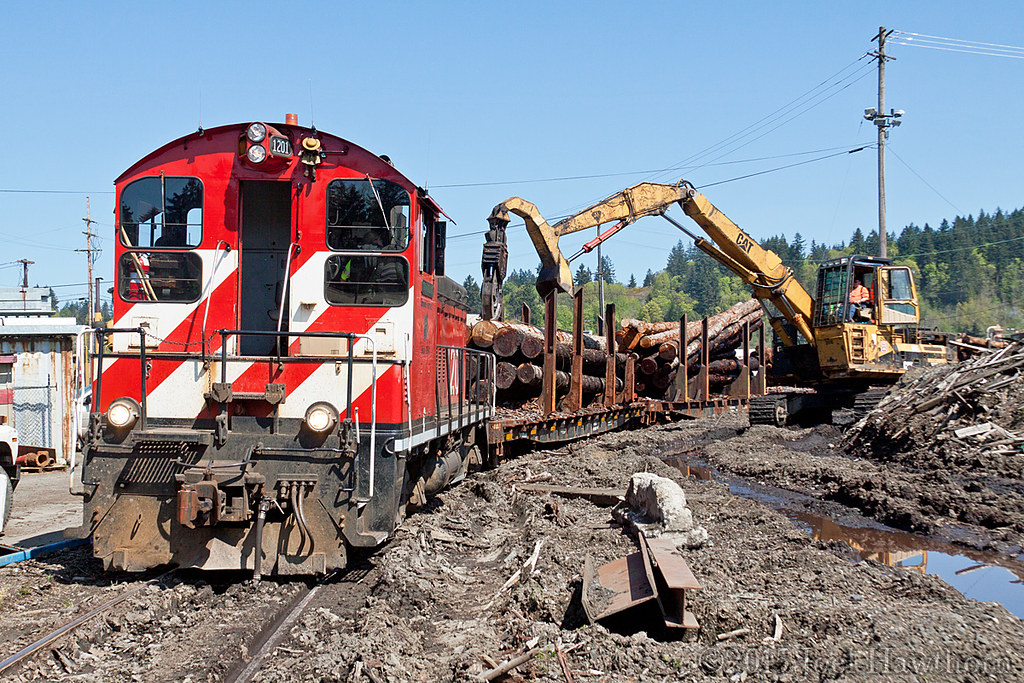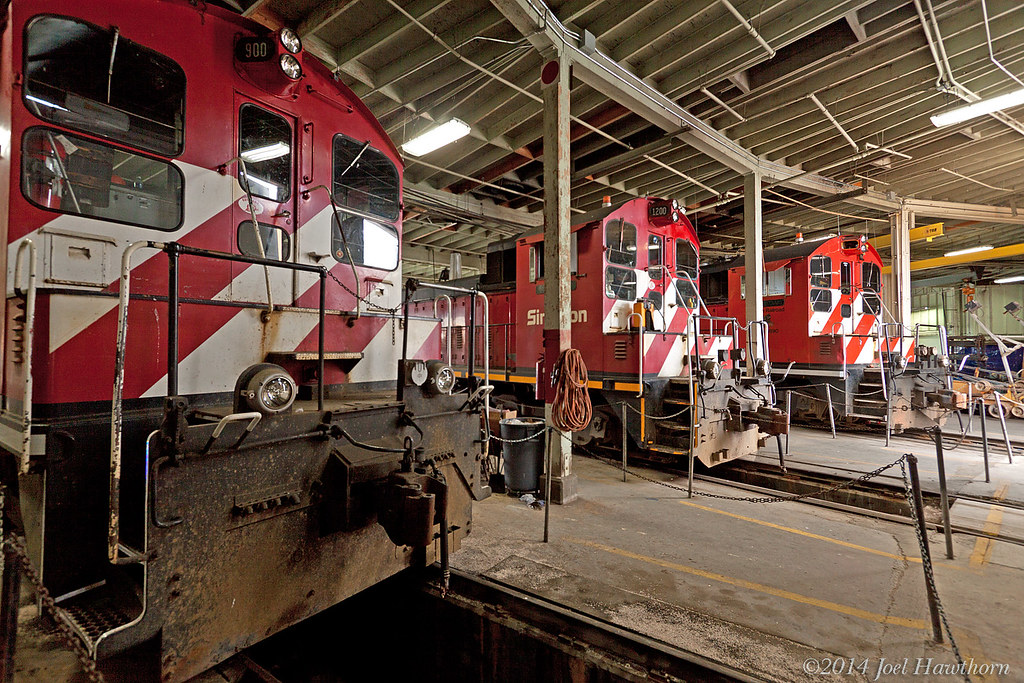Simpson Lumber Railroad...
Whilst the honour of the last logging railroad in the North America goes to the Englewood Railway on Vancouver Island, the subject of my N scale adventure, it outlived the last logging railroad in the USA by only two years...
Simpson Lumber Railroad in Shelton, Washington is another relic of the myriad of forestry lines that supported the massive timber extraction boom in the Pacific North West at the turn of the 19th century into the 20th century. Whilst many of these withered and died after the second world war, those that remained were modernised and the Simpson was no different, seeing serious dieselisation in the 1950s. The first EMD SW900 arrived in 1955, featuring dynamic brakes intended for it's purpose hauling heavy loaded trains, unlike many of it's brethren switching yards and terminals. Shortly afterwards in 1956 a pair of SW1200 were added, both fitted with dynamic brakes. In 1979 an Alco S3, numbered 600 arrived from Tacoma Municipal Belt Line, followed in 1983 by a third SW1200 (ex Burlington) neither without dynamic brakes and as a result not used for mainline trains without help, with the EMD quartet surviving to the end of operations. Rail operation appeared to hang in the balance after wash-outs in 2009, however despite concerns the bridge was rebuilt and service re-started in 2013. The end was nigh, and as the parent company looked to diversify the mills near Shelton were sold off, and abandonment came in 2015.
At the end of operations, the collection of EMD switchers in matching red and black colours worked both the line traffic and mill switching, sharing an 8 stall roundhouse that is crying out to be modelled...
It's no use, I've acquired a third Lifelike N scale SW1200 to work up as 900, this red livery is too attractive, this prototype too full of character.
What is it about lumber railroads, I suppose they have that peculiar blend of industrial and natural elements, the opportunity to blend man and machine with mother nature... they ran through beautiful mountains and forests and their singular purpose provides a focus that is hard to find with the larger 'common carrier' operations...
In 2015 Simpson Lumber sold the mill to Sierra Pacific and offered the roundhouse and rail line to the local council, the line was saved but Google Earth shows that the track to the roundhouse has been lifted. Sidings in the Shelton mill today are served by the shortline 'Puget Sound and Pacific'. However, the Simpson Railroad lives on, a preservation society was established in 2019 and locos 900 and 1200 saved, along with the caboose and 10 miles of the roadbed. Post Covid, they hope to operate tourist trains hi lighting the role both lumber, and the railroad played to the local economy through over a century of development.
We're very lucky that during the final few years Joel Hawthorn captured the railroad going about it's day to day operation, both on film and in still photographs. A selection are shared here, but a visit of Joel's Flickr is recommended. He has also produced a self-published book about the railroad, available through Blurb.
This is effectively the second in an unplanned series of posts about North American lumber railroads, the first being the Thurso and Nation Valley last year. I'm hoping to write a little more about some of the lines on Vancouver Island and the unique 'captive' paper mill lines north of Vancouver on the mainland, but no promises on how long they'll take to appear! Until next time, more soon...



Hi James
ReplyDeleteA follow up to your blog on Simpson, which as I think I said elsewhere is one of my all-time favourite railroads and a major inspiration for my HO-scale model logging/lumber shortline.
I was really sorry to see it go as even up to a year or so before its demise it seemed to have a future. One aspect you do not mention is that from the at least the late 1970’s there was a mill ( mill 5) at the dry sort 10 miles out of Shelton and the railroad hauled cut lumber on old A-frame cars down to Shelton for drying and planning. When I visited Shelton they were still using Pacific Car and Foundry 40-foot skeletons log–cars originally built in the 1920’s!!. Simpson had a well-equipped shop at Shelton and could maintain almost anything
Your review on diesels mentions the Alco #600 but not the earlier Alco S-4 #20 which worked until the mid-1980’s. This was built in 1950 for Schafer Bros following a demonstration tour by another Alco around the Pacific Northwest and included a time on the Simpson railroad. Schafer used it on a line out of Olympic Camp which was north of Camp Grisdale and had trackage rights over part of Simpson’s line before leaving to go to their dump on the Chehalis River. Simpson acquired Schafer in 1955 and along with it #20. Simpson also leased an ex-Army GE 80-ton centre cab for a while until they got #1202 from Pacific Transportation Services
In 1980 the Simpson magazine had a one page on the railway this set out the assigned runs for each “lokey”
Three transfers were in operation with #900 working to Camp Govey , #1200 to Camp Grisdale, and #1201 to Canyon River. The mill switcher was #20 working the sawmill, pulp mill and plywood plant and also ran out to Mill 5. Alco #600 was the dock engine dumping logs, as this needed to be done at high tide. Simpson later dredged the dump and the need to a separate dock(log dump) duty diminished. Also by the end of the 1980’s the SW1200’s were equipped for MU operation and #900 had become the mill switcher
Best regards
Alan Sewell , Hertford , UK
Alan thanks again for the commentary and additional (in depth) information. I’m modelling 900 and probably a caboose in N, because if I don’t, then I’ll end up building it in H0!
ReplyDeleteIf you ever need any more inspiration I have several photos of Simpson cabooses and not just the ex Chehalis Western wide vision one they ended up with
ReplyDeleteAlan